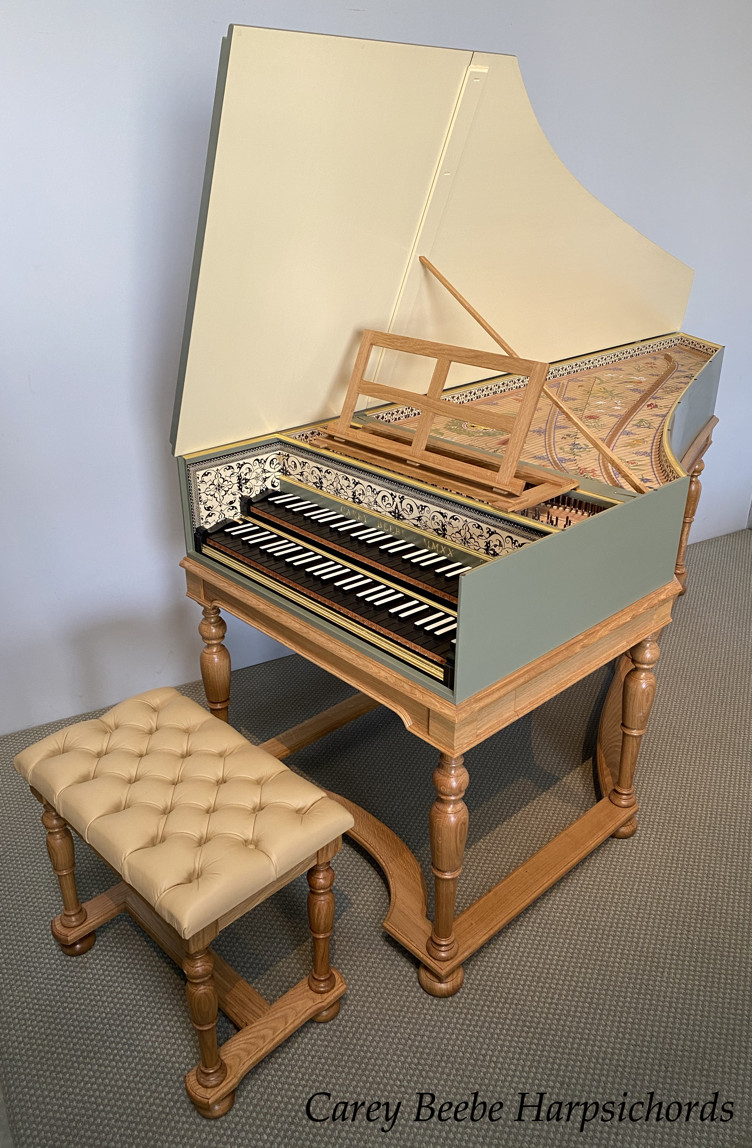Press GalleryCopyright © 2022 CBH & individual authors & photographers |
Coming up in June, Erin Helyard makes his long-awaited return to ANAM to debut a brand-new harpsichord built to ANAM’s specifications by one of the world’s great instrument makers, Sydney-based Carey Beebe. We spoke with Carey to learn a bit more about the process of crafting such a spectacular instrument.
 |
Can you tell us a little bit about yourself and your career as a Harpsichord maker?
I learnt piano from an early age, and always loved playing Bach. When I entered BMus at Sydney Con, I discovered that of the thirty-odd students in first year, thirteen were piano majors! That was too many for future comfort, so at the end of first semester, I changed over to harpsichord. I needed an instrument to practice on, so I built one from a kit with the help of my father. I had no specific intention of becoming a harpsichord maker, but I built another. And another. After I finished my degree, I went to the United States to learn more about building. For a few years, I had a career as both a player and maker, before deciding to concentrate on making.
ANAM has commissioned you to do a replica of a harpsichord originally made in the 17th Century. What was your process of re-creating this instrument?
I was working on the ANAM harpsichord for about a year, although I normally have several projects on the go at once. I don’t feel obliged to do everything myself, but rely on the expertise of others. Building a traditional instrument like a harpsichord requires traditional, hence largely European, materials. There’s no plywood, MDF, or plastic. If you like, this is an organic harpsichord: The strings are plucked by Canada goose quill, set into holly tongues sprung by boar bristle.
Can you share with us the characteristics of harpsichords created during the 17th or 18th centuries and how do you think those characteristics resonate with classical music performance today?
The best instruments have a clarity and precision of tone that can be molded at the will of the player. I believe that attentive audiences can pick that up, and feel part of something when they are in the presence of a harpsichordist that is one with their instrument. Please don’t try to tell me the harpsichord can’t play expressively!
What do you think is the most valuable thing that ANAM musicians will get from playing this kind of instrument?
For a sensitive musician, a great harpsichord is the best teacher.
| Music Makers Volume 43, May 2022 |
| Site overview | |
| Harpsichords Australia Home Page |